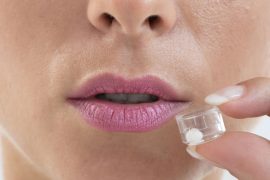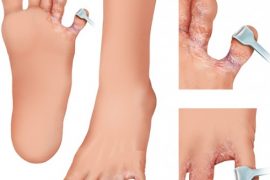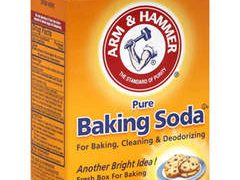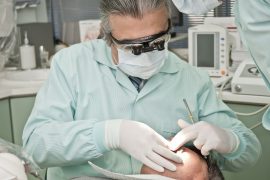Gout is a type of inflammatory arthritis, more commonly diagnosed among men. The prevalence of the condition is growing in the U.S. today. What used to be found almost exclusively in men over 40 now affects both young and old, men and women, thin and overweight people.
The nickname, “disease of kings” was given to the condition as it usually affected men who overindulged in rich foods and alcohol. King Henry VIII of England, Alexander the Great, Michelangelo, Christopher Columbus and Benjamin Franklin are just some of the historical figures who suffered from gout.
The prevalence of the condition has risen over the past two decades, now affecting 4 percent of Americans or 8.3 million people.1 Researchers associate rising prevalence to the increasing number of people who are overweight and hypertensive.
However, while it is a common condition, doctors and researchers have not come to a consensus about treatment. Confounding the issue is the relationship between doctors, lobbyists and big pharmaceutical companies.
However, if steering clear of long-term drug use is your goal, there are several strategies you can use to reduce your risk of gout and flare ups.
Gout Is a Form of Inflammatory Arthritis
Gout is a painful condition that generally affects the big toe, but may also attack the ankle, knee, hips, wrist and elbow. The pain is the result of uric acid crystals deposited in the joint space. These sharp crystals irritate and inflame the tissue at the joints, triggering inflammation and swelling.2
As your body breaks down purines found in food, uric acid is formed. Purine-rich foods include meats, gravies, beer and fish such as anchovies, mackerel, sardines and herring.3 Normally, uric acid dissolves in the blood, is filtered through the kidneys and passes out through your urine.4
When enough uric acid is not filtered and eliminated, hyperuricemia develops, which can precipitate uric acid crystals and the formation of gout. This is sometimes confused with a similar condition caused by the buildup of calcium phosphate crystals, called pseudogout.
However, while uric acid is formed through the metabolism of purines, sugar — and more specifically fructose — increases your risk of developing gout.
Using animal models, researchers demonstrated fructose increases the formation of uric acid5 and increases the risk of high blood pressure,6 a risk factor for gout. Fructose also reduces the excretion of uric acid.7
As explained by Dr. Richard Johnson, uric acid is actually a byproduct of fructose metabolism. In fact, fructose typically generates uric acid within minutes of ingestion. Another common substance that elevates uric acid is beer.
Interestingly, uric acid functions both as an antioxidant, and as a pro-oxidant once inside your cells. So, if you lower uric acid too much, you lose its antioxidant benefits. But if your uric acid levels are too high, it tends to significantly increase inside your cells as well, where it acts as a pro-oxidant.
Johnson believes the ideal range for uric acid lies between 3 to 5.5 milligrams per deciliter (mg/dL).
That said, your risk of developing gout is not only based on the amount of uric acid you produce, but also on your body’s inability to filter and excrete uric acid in your bloodstream. To deter the development of gout you must address both the development of uric acid and your body’s ability to filter and excrete it.
4 Stages of Pain
If you experience gout, you may suffer through four stages of the condition. The initial stage is asymptomatic, or without symptoms, called hyperuricemia. Elevated levels of uric acid in the blood stream are present, but crystal formation in the joints is not.8
While the prevalence of gout is 4 percent, the prevalence of hyperuricemia is slightly more than 21 percent of the population.9 During the acute stage, you’ll experience a sudden onset of pain and swelling in a joint, most often the big toe.
The inflammation, pain and swelling of the joint often strikes at night.10 An attack may be triggered by the use of alcohol or the presence of another illness. Usually, the pain, swelling and inflammation peak quickly and subside between three and 10 days, even without treatment.
The first attack is often the shortest, and subsequent attacks may last longer and occur more frequently as time goes on. The third stage of the condition is called interval or intercritical gout. This is the period between attacks, during which you have no symptoms.
Unfortunately, some experience the most disabling stage that can take up to 10 years to develop. Chronic tophaceous gout may cause permanent damage to the affected joints and sometimes to the kidneys as well. It is characterized by chronic arthritic changes, aching joints and tophi, or lumps of urate crystals in the soft tissue.11
Making proper lifestyle changes and using appropriate treatments significantly reduce your risk of reaching this stage.
Doctors Can’t Agree on Long-Term Drug Treatment
There are several medications on the market to treat the buildup of uric acid in the bloodstream, considered responsible for the development of gout.12 The disagreement isn’t about which drug, but rather how long patients should remain on medication.
The American College of Physicians (ACP) recently released clinical practice guidelines recommending less aggressive pharmaceutical treatment for gout.13 This move angered two professional groups developed to support gout research and encourage physicians to use long-term medical treatment.
Interestingly, both groups are financially backed by drug companies.14 Many medical recommendations are now being thoroughly evaluated and challenged, such as the number of mammograms necessary for early breast cancer diagnosis15 or how aggressive high blood pressure should be managed.16
Gout treatment is also being challenged. There is a lack of clinical trials indicating long-term pharmaceutical management of uric acid levels will actually reduce joint damage and patient pain.
Dr. Robert McLean, rheumatologist at Northeast Medical Group in New Haven, CT and associate clinical professor at Yale School of Medicine, commented on the lack of data necessary to support long-term pharmaceutical intervention, saying:17
“Strong data just doesn’t exist. It may be the right thing to do in many clinical situations, but we don’t have data to say that with certainty, so we can’t endorse it.”
The foundation of the argument to continue long-term pharmaceutical treatment is that Big Pharma will not pay for research on medication already approved and physicians should not wait until a patient suffers from a flare-up to initiate treatment.
Common medications used for gout include allopurinol, probenecid, colchicine and febuxostat. Side effects from these medications are not inconsequential, and include:18
| ✓ Joint pain | ✓ Flu symptoms | ✓ Hepatotoxicity (reduced liver function) |
| ✓ Anorexia and weight loss | ✓ Pruritis or itchy skin triggered by reduced liver function | ✓ Renal failure secondary to cancer |
| ✓ Anxiety | ✓ Chest pain | ✓ Rash or hives |
| ✓ Confusion | ✓ Sudden numbness or weakness on one side | ✓ Nausea |
| ✓ Low grade fever | ✓ Dark urine | ✓ Sudden headache |
| ✓ Flushing | ✓ Constipation | ✓ Easy bruising |
| ✓ Stuffy nose | ✓ Shortness of breath | ✓ Fast, irregular breathing |
| ✓ Puffiness around the eyes | ✓ Changes in skin color | ✓ Bloody urine |
Drug Company Money Sways Research Results and May Sway Treatment Decisions
It would appear that many of the side effects from the medications used to reduce uric acid levels are significant, and therefore would warrant cautious use, medicating only when necessary to treat the condition, and not as a prophylactic strategy. One key to the treatment debate is the question of how much influence drug companies have when they contribute to physicians income.
Verbal advocate of long-term drug use, Dr. Robert Terkeltaub, professor of medicine at the University of California, San Diego, received approximately $35,000 in consulting fees from drug companies making gout medication.19 Dr. Lawrence Edwards, vice chair of graduate medical education at the University of Florida college of medicine, is also an advocate who calls for long-term drug treatment and received $27,000 in consulting fees from drug companies.
These two physicians are considered leaders in their field. Terkeltaub dismisses the idea his consulting fees influence his recommendations, or have tainted the recommendations of three rheumatology groups who developed guidelines advocating the use of pharmaceutical intervention.20
However, the link between drug company money and research results have been studied, and on multiple occasions, research demonstrating favorable results for the medication were led by physicians who were receiving consulting fees by the drug company.21,22,23,24 One study finding the diabetes drug Avandia more effective than standard therapies may have subsequently been responsible for 83,000 subsequent heart attacks and death.25
Only later was it revealed this study was funded by the drug company, GlaxoSmithKline, and 11 of the authors received money from the company, either as employees with stock options or consulting fees.26 Needless to say, physicians rely on research studies and practice guidelines to determine treatments for their patients. When results of studies are not accurate, or influenced by drug companies, treatments may not result in the best outcome.
In an evaluation of studies published over a 12-month period in the New England Journal of Medicine (NEJM) by the Washington Post, it was determined that 73 articles were original drug studies. Of those, 60 were funded by a drug company, 50 were co-written by a drug company and 37 had a lead author who had accepted outside compensation from a drug company.27 Published results in what might be the most prestigious medical journal in the world may not be accurate after all.
Medical Advice Being Lobbied in Congress and on Your Television
Drug companies may also exert an influence over your personal physician. In surveys conducted in 2004 and 2009, and subsequently published in the Journal of the American Medical Association (JAMA), over 80 percent of physicians reported at least one type of financial relationship with a drug or medical device company.28 Indeed, drug companies have spread a blanket of influence from your personal physician to your congressman.
In an analysis of money spent to lobby U.S. Congress in 2016, the two largest trade groups spent $29 million and the top 15 drug companies spent an additional $80 million, well over $100 million in all.29 The largest trade group, Pharmaceutical Research and Manufacturers of America (PhRMA), spent nearly $20 million to express their views on Medicare drug pricing, importing drugs from Canada, and drug pricing transparency.30
In an effort to improve their image in the public eye after increasing drug prices and scathing remarks from the President,31 the industry has planned a massive television and digital ad campaign. This multimillion dollar campaign to defend its position will spend in the “high” tens of millions over the next four to five years.32
Americans rank drug prices as a primary health concern.33 The industry argues their products are better, lifesaving and are curing diseases, which helps keep overall costs down, even though Americans pay more for the same medications than other countries.34 Their ad campaign is designed to tell a story about biopharmaceutical breakthroughs and portray drug companies as bold risk-takers, hoping to alleviate public frustration and reduce an increasing environment of political battering.
The flood of money being thrown at public advertising, Congress and into pharmaceutical research represents a massive conflict of interest and undermines the truth in medical science. The conflict of interest within this practice is obvious, which is why the drug industry attempts to keep actual payment amounts quiet.
Although many medical, educational and research institutions require faculty members to disclose potential conflicts of interest, many do not actively monitor employees’ activities. The new television, print and digital advertising planned to change the face of the pharmaceutical industry in the public eye will be taking advantage of powerful media strategies to overcome frustration with the industry.
Reduce Your Risk of Gout and Flare Ups Naturally
In this short video I discuss the causes of gout and how you may reduce your risk using natural methods. Gout is painful and can be chronic. More important than popping a few pills, which may trigger life-altering medical conditions, is to identify the real, underlying causes of gout, and to make different choices.
|
✓ Reduce Fructose Products containing high-fructose corn syrup are a major risk factor.35 In one study, men who drank two or more soft drinks per day had an 85 percent higher risk of developing gout. It doesn’t matter where you get the fructose from; even fruit juices and fructose-rich fruits will also increase your risk of developing gout or trigger a flare up. Reduce your intake of fructose by reducing or eliminating processed foods and soda, reading labels, and limiting your fruit consumption. For optimal health, keep your total fructose intake to a maximum of 25 grams per day. |
|
✓ Body Weight Within Normal Limits One risk factor for developing gout is obesity. In fact, the increasing waistline of people in the U.S. is one factor behind rising prevalence of gout.36 Data also demonstrates a high prevalence of people suffering from diabetes, insulin resistance, obesity, hypertension and heart disease in those diagnosed with gout.37 Keep your body weight within normal limits. Even a modest weight loss can reduce your risk of developing metabolic syndrome and subsequently, your risk of gout.38 |
|
✓ Limit Alcohol Alcohol is a strong risk factor for gout, obesity and diabetes.39 I believe it is best reserved for when you’ve achieved optimal wellness and do not have disease conditions such as gout, diabetes or other signs of ill health. At that point, you may use it sparingly, or in moderation. |
|
✓ Exercise Daily Exercise is not recommended while your joints are in pain or when it might cause further injury, but once gout is under control, exercise is a necessary adjunct to a healthier lifestyle. Exercise will even help prevent further attacks by increasing circulation and normalizing your uric acids levels, which it does primarily by normalizing your insulin levels.40 |
|
✓ Fight Inflammation With Antioxidants Tart cherries contain two powerful compounds, anthocyanins and bioflavonoids. Both of these compounds slow down the enzymes cyclo-oxyygenase-1 and -2, which helps relieve and prevent gout and arthritis.41 Strawberries also help your body to eliminate uric acid.42 If fresh fruit is not available, one option is to purchase frozen or canned tart cherries or strawberries. Organic is best and look for canned cherries that are packaged in non-BPA lined cans. |
- 1, 9 Arthritis and Rheumatism 2011; 63(10):3136
- 2, 4, 8 National Institute Arthritis and Musculoskeletal and Skin Diseases, Questions and Answers about Gout
- 3 WebMD Diet and Gout – Topic Overview
- 5 American Journal of Physiology 2006; 290(3):F625
- 6 Journal of Pharmacological and Toxicological Methods 1995; 33(2):101
- 7 Current Rheumatology Reports, 2012;14(2):179-188
- 10 Arthritis Foundation, What is Gout
- 11 Centers for Disease Control and Prevention, Gout
- 12, 18 Drugs.com, Medications for Gout
- 13 Annals of Internal Medicine, January 2017;166(1):58-68
- 14, 17, 19, 20 StatNews, January 25, 2017, Battle erupts over how to treat gout, no longer the ‘disease of kings’
- 15 Journal of the American Medical Association 2015; 314(15):1599
- 16 The New England Journal of Medicine, Decembe 2015; 373:2103-2116
- 21 BMJ 2010; 340
- 22 Medscape Journal of Medicine 2008; 10(9):211
- 23 Scientific American, September 23, 2012
- 24 DrugWatch, Big Pharma’s Role in Clinical Research,
- 25, 26, 27 Washington Post, November 24, 2012
- 28 Journal of the American Medical Association, 2010;170(20):1820
- 29, 30 StatNews, January 25, 2017, A year of arm-twisting: How the drug industry flexed its lobbying muscle in 2016
- 31 StatNews, January 11, 2017
- 32 StatNews, January 23, 2017
- 33 StatNews, September 29, 2016
- 34 Wall Street Journal, December 1, 2015
- 35, 37 Current Opinions in Rheumatology 2008;20(2):179
- 36 Daily Mail, Obesity epidemic to blame for record number of people suffering gout – and the sharpest rise is in patients in their 20s and 30s
- 38 Diabetes Care 2009; 29(9):2102
- 39 Drugs and Aging, 2007; 24(1):21-36
- 40 Physiological Reports 2015;3(4):12339
- 41, 42 Arthritis Treatment and Relief Cherry and Gout








